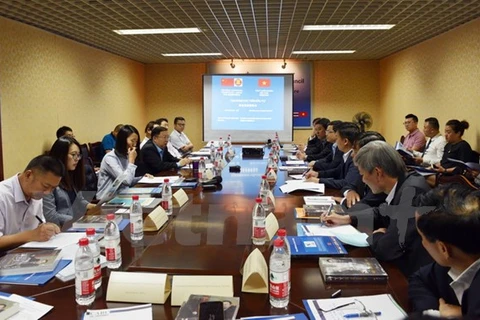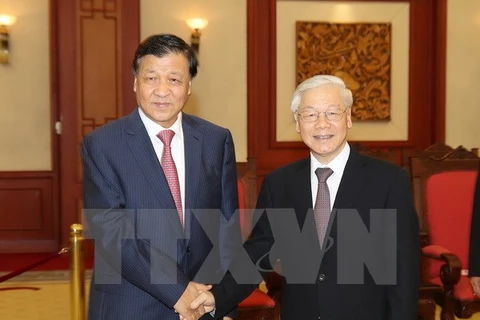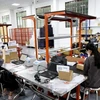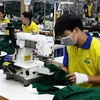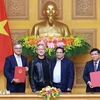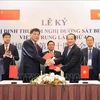Hanoi (VNA) – Deputy Minister of Industry and Trade Tran Quoc Khanh and his Chinese counterpart Gao Yan co-chaired the 10th meeting of the Vietnam-China Committee for Economic and Trade Cooperation in Hanoi, focusing on measures to reduce Vietnam’s trade deficit with China.
They were delighted that Vietnam-China trade is growing towards a balanced manner.
Vietnam’s statistics showed that two-way trade reached 71.9 billion USD in 2016, a rise of 7.9 percent over the previous year, while trade deficit reduced 13.67 percent year on year.
By the end of August this year, trade between the two countries hit 55.2 billion USD, up 23.59 percent over the same period last year, with Vietnam running a deficit of 17.7 billion USD, down 5.76 percent.
China continued to be Vietnam’s top trade partner, while Vietnam was China’s biggest partner in ASEAN and ninth biggest in the world.
The Chinese side agreed to speed up the evaluation of Vietnamese milk and dairy products, while stepping up the quarantine of Vietnamese fruits before allowing the import of these products to China.
At the same time, the two sides discussed a wide range of issues to manage the quality of Vietnamese rice in the Chinese market, while concurring to increase the exchange of information to facilitate the export of rice and alive pigs to China.
Both countries will encourage businesses and relevant trade associations to foster connections to increase the export of Vietnamese farm produce, aquatic products and fruits to China.
They also recognised the effective operation of Vietnam’s Trade Promotion Office in China’s Chongqing city in bolstering bilateral economic and trade cooperation and supporting businesses of both sides. The Chinese side is finalizing procedures to approve the formation of a similar office in Hangzhou on the occasion of the Chinese leaders’ visit to Vietnam and attend the APEC Summit in November this year.
They will work together to deal with problems in joint projects, such as the Cat Linh – Ha Dong urban railway project, while discussing the signing of an agreement on cooperation in some additional projects in the future.
Both sides will also negotiate for the early signing of a protocol replacing the 1992 Vietnam-China border railway protocol, and launch a feasibility study for the use of China’s aid package worth 1 billion CNY (nearly 150 million USD) to build a traditional medicine academy in Vietnam in 2017.-VNA
VNA


